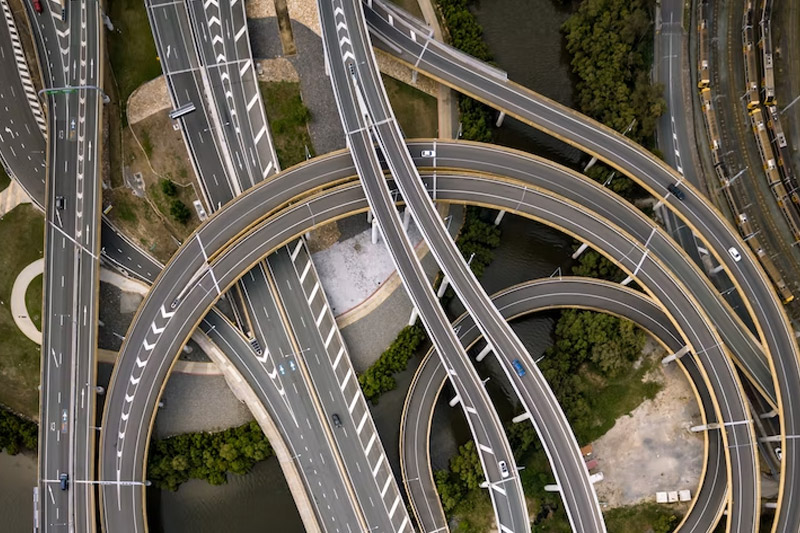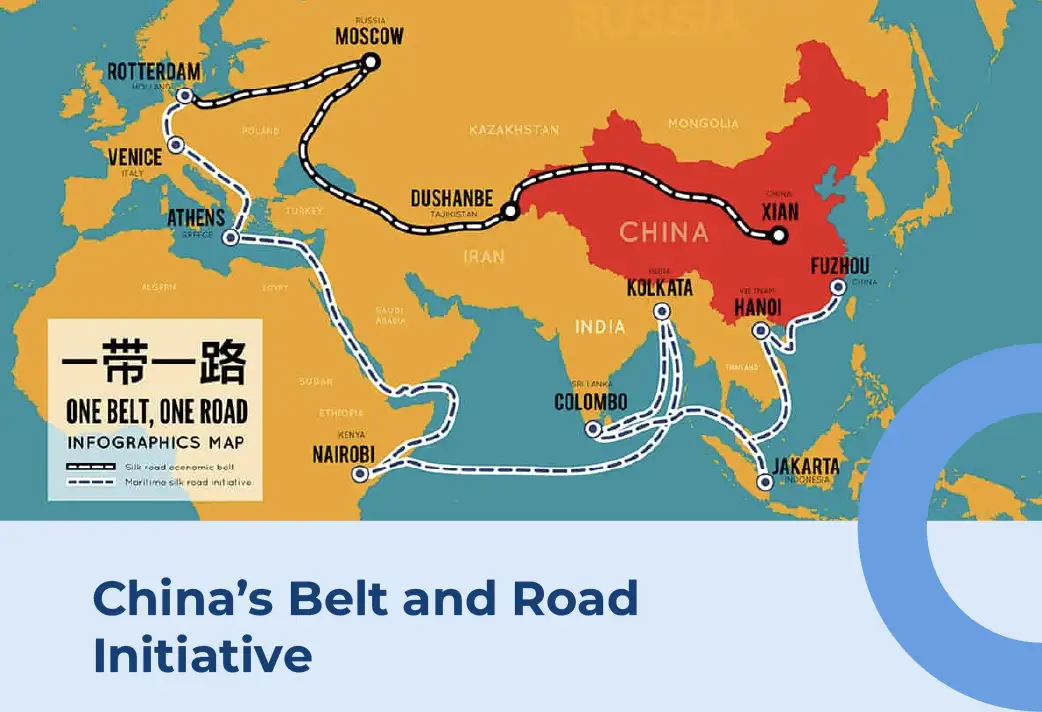China’s Belt and Road Initiative (BRI)–also called “One Belt One Road“–is an initiative launched in 2013 by President Xi. It is a massive infrastructure project that aims to develop and improve trade and communications through Southeast Asia, Central Asia, and Europe.
The six principal geographical areas it is focused on are China, Mongolia, Russia, West and Central Asia, Pakistan, the Indian subcontinent, and the Indochina region.
The initiative’s name draws from the historic Silk Road, which was established during the Han Dynasty and bridged China to the Mediterranean countries via a web of trade routes through Eurasia. The BRI looks to build a connection across continents through roads, railroads, pipelines, airports, and maritime passages, creating a united trade market, cultural exchange, and opportunity for economic expansion.

Tired of scrolling? Download a PDF version for easier offline reading and sharing with coworkers
In a hurry? Save this article as a PDF
Tired of scrolling? Download a PDF version for easier offline reading and sharing with coworkers.
Fill up the form below 👇🏼
The Goals of BRI
The goals of the Belt Road Initiative are as expansive as the ground it covers. Still, some of the primary objectives for the initiative have been summarized below:

1. Connected Infrastructure
China has already shown its eagerness to pursue large infrastructure projects; with this plan, it hopes to expand its interests in different countries, helping them to build their own infrastructure and boost their economies.
2. Connected Individuals
As of 2020, over 100 countries worldwide have signed onto the initiative (source). The range of countries involved opens the door for communication and understanding across borders and continents.
3. Connected Economies
The connectivity of individuals and infrastructure naturally brings about the unification of economies and industries. A report by Refinitiv in 2019 showed that over 55% of the enterprises that signed onto the initiative were not Chinese, signifying the potentially international nature of the project (source).
4. Connected Finances
With China starting the initiative, the Chinese renminbi (RMB) has also played a key role. As of 2019, over 20 countries in the BRI had signed currency swap agreements with China; the internationalism of the renminbi is expected to increase as a result even further in years to come.
Check Our China Labor Law Guide
Learn how the Chinese law is applied in all aspects and situations, from an employer and employee perspective

The Budget for BRI
It is not surprising that the undertaking of such a global initiative comes with a large price tag. As of 2015 China had invested over US$160 million into the infrastructure and construction projects for the BRI. In 2017 it was estimated that another US$1 trillion could be spent over the next decade in projects by countries within the BRI.
Additionally in 2014 President Xi announced the Silk Road Fund, which pledges US$40 billion to business projects that are started by countries part of the initiative.
US Involvement in the Initiative
The US government’s reception of the BRI has not been one of unequivocal support. The Trump administration was quite vocal about their concerns that the initiative was a “debt-trap” and discouraged its allies from joining (source). Nonetheless, China has expressed eagerness for the US to join the initiative. The Chinese foreign minister Wang Yi articulated a willingness to work together with the US at the 50th anniversary of the Shanghai Communique in 2022.
Benefits of the BRI
Aside from the potential advantages should the initiatives reach the goals outlined above, there are also other ways in which other countries can benefit from joining the BRI:
1. Improved Transportation
The BRI covers countless countries and borders through which trade and the transportation of goods would normally cost a great deal of time and money. By establishing more railways, roads, airports, and other transportation-related infrastructure projects, industries can reduce delays and save costs.
2. Improved Welfare
The initiative focuses not only on trade and infrastructure; China also pledges to help improve the health, education, and public systems of countries that join the initiative. To advertise the BRI, the Chinese government provided aid for flood control in Thailand and Myanmar, assisted in training healthcare professionals, and offered medical services (source).
3. Improved Environmental Developments
The Belt and Road Initiative International Green Development Coalition (BRIIGC) was launched in 2019 as part of the BRI. The coalition works with over 100 countries to collect and analyze data on how to effectively make and use green energy and create sustainable solutions for transportation and industries (source).
Conclusion
An initiative as sprawling and widespread as the BRI does not come about without concerns. The most common ones expressed are the magnitude of debt that could occur with such an enormous investment and the potential for corruption and other risks in building infrastructure.
Nonetheless, the initiative continues to progress towards being an international transcontinental network that inspires faster trade, improved communication, and better development for all countries involved.

SHARE